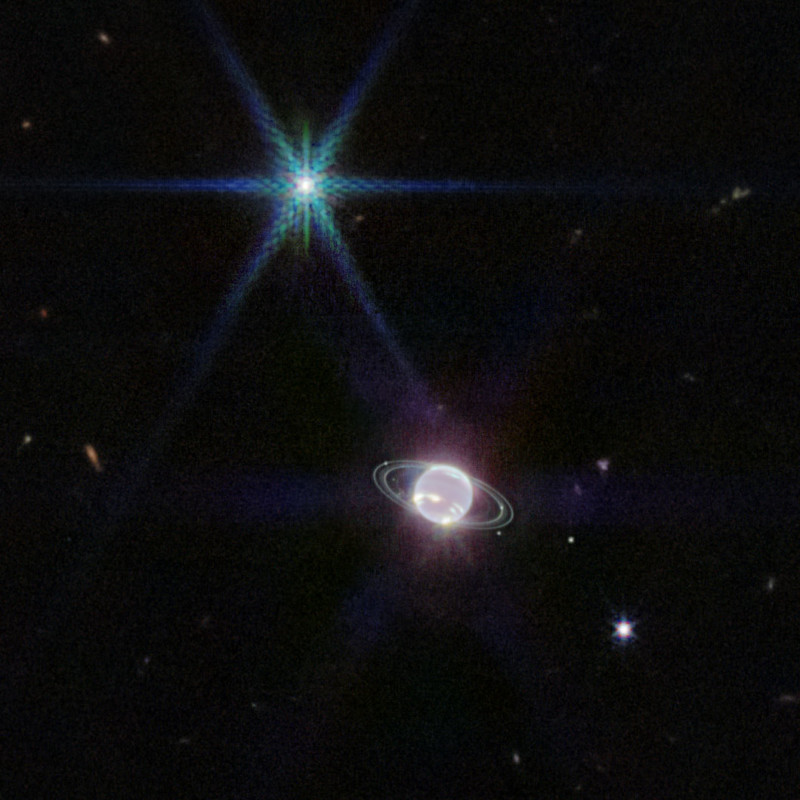James Webb Telescope Captures Clear Photo of Neptune’s Rings and Moons
![]()
NASA’s James Webb Space Telescope has captured a photo of Neptune that displays the clearest view of the planet’s rings in more than 30 years.
The space agency says that the new image crisply shows the faint rings of the distant planet, some of which have not been detected since NASA’s Voyager 2 flew by in 1989. In addition to several bright, narrow rings, the Webb image clearly shows Neptune’s fainter dust bands.
“It has been three decades since we last saw these faint, dusty rings, and this is the first time we’ve seen them in the infrared,” Heidi Hammel, a Neptune system expert and interdisciplinary scientist for Webb, says.
“Webb’s extremely stable and precise image quality permits these very faint rings to be detected so close to Neptune,” NASA explains.

The photo was captured using the JWST’s NIRCam, or Near Infrared Camera, which captures objects from 0.5 to 6 microns, the near-infrared range. As such, Neptune doesn’t appear blue to the space telescope.
“In fact, the methane gas so strongly absorbs red and infrared light that the planet is quite dark at these near-infrared wavelengths, except where high-altitude clouds are present,” NASA explains. “Such methane-ice clouds are prominent as bright streaks and spots, which reflect sunlight before it is absorbed by methane gas. Images from other observatories, including the Hubble Space Telescope and the W.M. Keck Observatory, have recorded these rapidly evolving cloud features over the years.”
Neptune has a 164 year orbit around the Sun which means that the northern pole of the planet is just out of view for astronomers right now. The photo does show a previously-known “vortex” at the southern pole of the planet, but thanks to Webb’s impressive camera system, this is the first time that astronomers have been able to see a continuous band of high-latitude clouds that surround it.
![]()
The photo also reveals seven of Neptune’s 14 known moons, one of which is so bright that the JWST’s iconic multi-pointed diffraction spikes make it appear as though it is a star. It is not, but rather Triton, and it appears brighter than the planet because it is covered in a frozen sheet of condensed nitrogen. Because of this, the moon reflects an average of 70% of the sunlight that hits it, far outshining Neptune whose atmosphere is darkened by methane absorption at the near-infrared wavelengths.
NASA says that additional studies of Neptune and Triton with Webb are planned in the coming year despite some current mechanical issues that are affecting one of the telescope’s MIRI camera modes.
Image credits: NASA, ESA, CSA, STScI